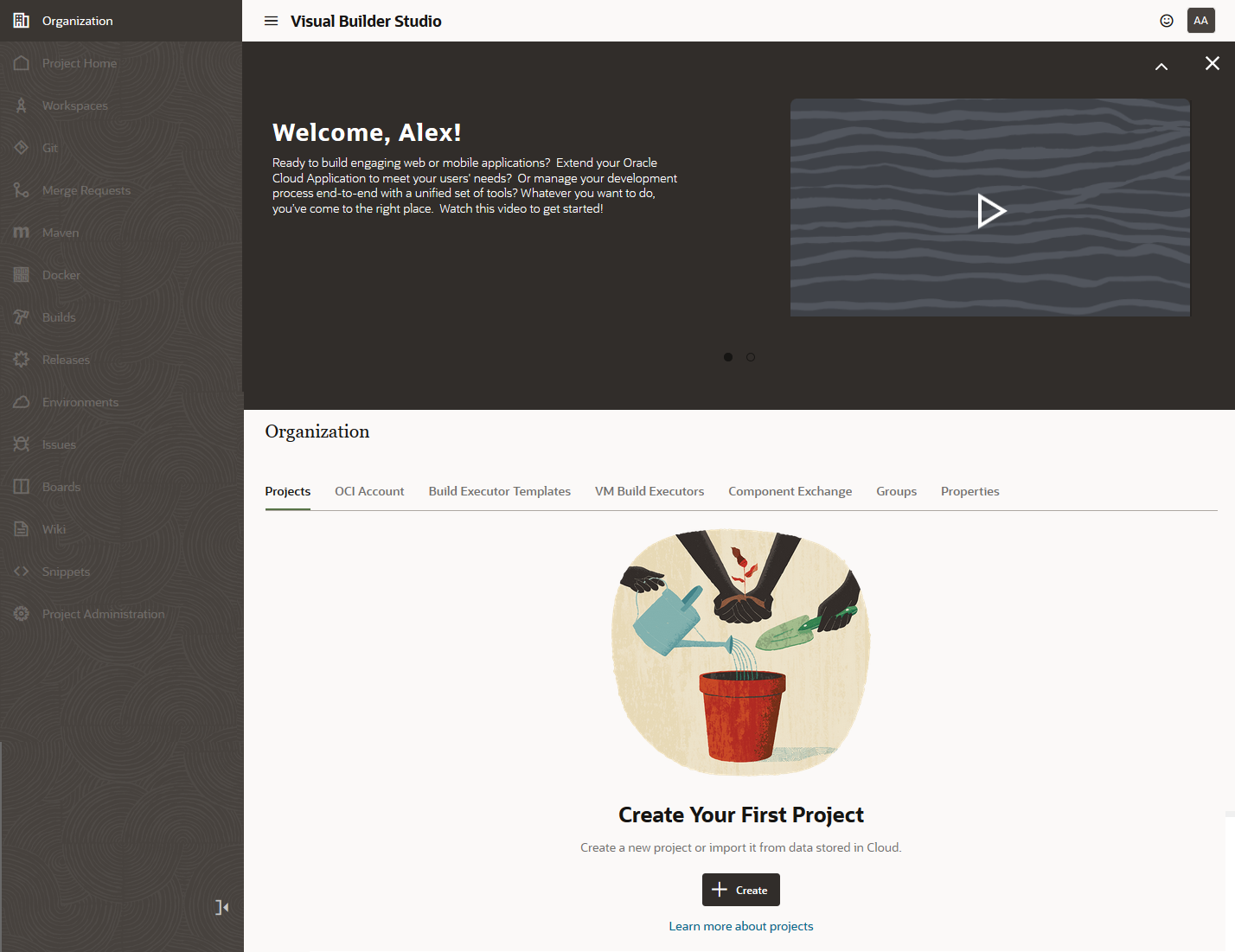Create a VB Studio Instance in Your Oracle Cloud Account
Create your own VB Studio instance if you're using VB Studio to manage a large software development project that uses Oracle Cloud Infrastructure (OCI) cloud services, and doesn't involve the extension of Oracle Cloud Applications.
Note:
If you're using VB Studio just to configure and extend Oracle Cloud Applications, skip this. Instead, you'll use the VB Studio instances that Oracle provisions for you. You can also skip this if you're going to create visual applications using one of the VB Studio instances provisioned with your Oracle Cloud Applications account. See Work With Multiple VB Studio InstancesNote that when you sign up for Oracle Cloud Infrastructure, a set of service limits is configured for your tenancy (account), which is the quota set for a given resource. The VB Studio service limit provides one VB Studio instance per region that your tenancy spans. If your tenancy spans multiple regions, each region can have one VB Studio instance. This is on top of any VB Studio instance that Oracle provisions for you as an Oracle Cloud Applications customer.
What Are the Next Steps?
- You're assigned the DEVELOPER_ADMINISTRATOR IDCS role, which enables you to set up VB Studio, manage the VM build executors, and update the organization details. After you're assigned the role, you become a VB Studio Organization Administrator.
- You'll receive an email with the subject Verify your Oracle Visual Builder Studio email. Open the email and click the URL link in the email body to verify your email. If you don't do this, you won't receive important email notifications.
- After verifying the email address, you’ll receive another email with the subject Welcome to Oracle Visual Builder Studio. This email contains the VB Studio URL that you can bookmark.
- Set up VB Studio's build system for CI/CD, which enables your organization's developers to create jobs to build, package, test, and deploy their apps. See Set Up VB Studio for CI/CD.
- As part of that CI/CD setup, you must provide access for additional VB Studio users. See Step 5: Set Up Users and Groups to add individual users or Manage Your Organization's Groups to add groups of users.
- If you created a VB Studio instance so that your users can develop visual applications and deploy them to Visual Builder runtime instances, see Set Up VB Studio for Developing Visual Applications.
Note:
If your users are using the Free VM account to develop and deploy visual applications, make sure the VB Studio instance is authorized to access Visual Builder instances connected to your OCI account. Without this authorization, they won't be able to create environments with a Visual Builder instance to deploy their visual applications. See Authorize VB Studio to Access Visual Builder and Integration Instances on the steps to complete this authorization.
If you need to make any changes to your OCI account, you can use the Edit button on the OCI Account page to get to the Oracle Cloud Console: 
Description of the illustration editociacct.png
